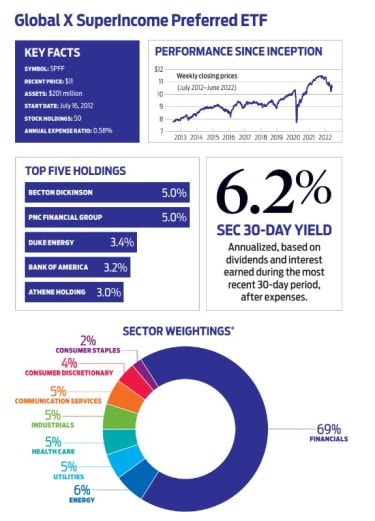ETFs
Preferred stocks and preferred stock ETFs may serve as a steady hand for income investors in an uncertain market.In a topsy-turvy stock and bond market, preferred securities may provide extra income and a small dose of stability. These hybrid investments are part bond, part stock. Their dividends get paid ahead of common stock dividends (but not before bond interest) if a company hits hard times.
These days, preferred stocks typically yield 6% – better than the current 1.6% yield of the S&P 500 Index and the 3.5% yield of the Bloomberg U.S. Aggregate Bond Index.
Preferred stock exchange-traded funds (ETFs) have tumbled along with everything else over the past 12 months, but they have suffered half the volatility of the stock market.
Global X Superincome Preferred ETF (SPFF) invests in 50 of the highest-yielding preferred stocks in the U.S. and Canada. Over the past 12 months, the fund lost 5.9%, which was better than the 8.4% drop in the Agg index. “At current yields, this could be an attractive entry point for investors who can withstand a certain level of volatility and risk,” says Rohan Reddy, director of research at Global X.
Among the caveats: Like bonds, these securities are sensitive to interest rate moves (bond prices and rates move in opposite directions). And preferred securities typically sport lower credit-quality ratings than traditional bonds. More than half of the fund is invested in securities with below-investment-grade ratings (double-B or lower).
But preferred securities have historically experienced “very” low default rates, notes Reddy. And the lion’s share of the securities in the ETF are issued by financial firms, which he says currently have strong balance sheets after shoring up their finances during the pandemic.
